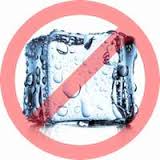Research published in the International Journal of Therapeutic Massage and Bodywork (IJTMB) found that older adults who receive massage therapy for up to six weeks could benefit from decreased blood pressure and improved stability.
Falls in older adults represent a primary cause of decreased mobility and independence, increased morbidity, and accidental death. Research and clinical reports indicate that therapeutic massage (TM) may positively influence suggested causative factors. This project assessed the effects of six weeks of TM treatment on balance, nervous system, and cardiovascular measures in older adults.
Results:
The TM group showed significant differences relative to controls in cardiovascular and displacement area/velocity after the week six session, with decreasing blood pressure and increasing stability over time from immediate post-TM to 60 minutes post-TM. Long-term differences between the groups were detected at week seven in displacement area/velocity and systolic blood pressure.
Conclusions:
Results suggest six weeks of TM resulted in immediate and long-term improvements in postural stability and blood pressure, compared to a controlled condition.
Sefton JM, Yarar C, Berry JW, et al. Six weeks of massage therapy produces changes in balance, neurological and cardiovascular measures in older persons. International Journal of Therapeutic Massage & Bodywork.2012; 5(3):28-40.

